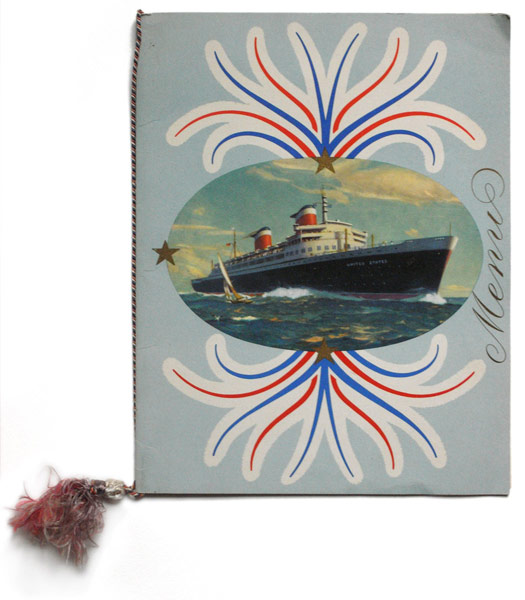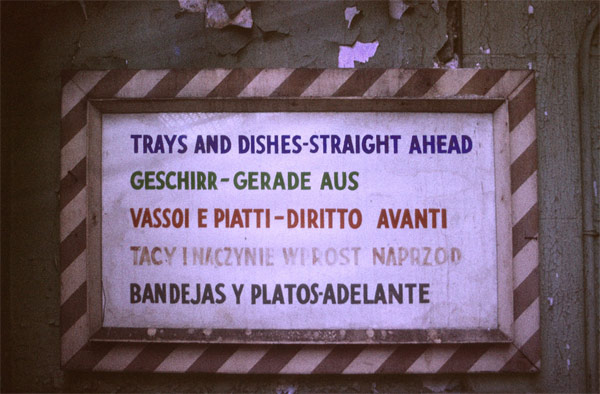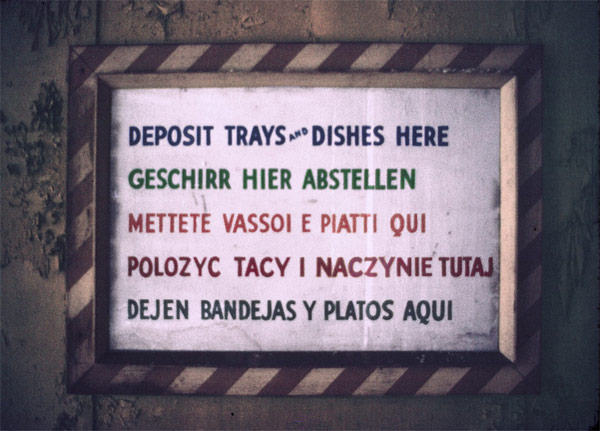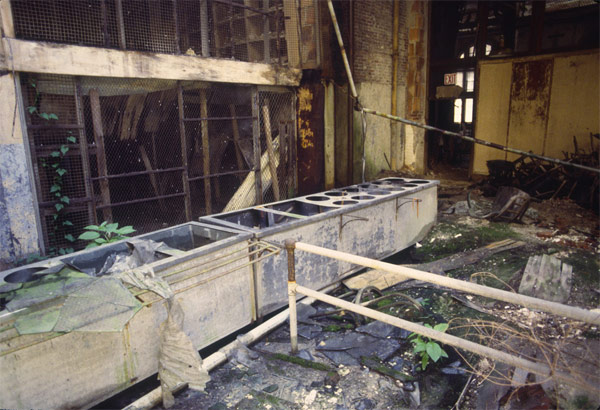 |
Lost Meals
|
Many times when I photograph an abandoned place, I think about the people that lived or worked there and what their lives must have been like. One of the more evocative places is the dining room, where food had the power to transport to another time or place, bringing up feelings of nostalgia, comfort, elegance, wonder or sometimes even alienation or fear. Here are three of those places and the feelings they can still bring out.
S.S. United States
The S.S. United States was the fastest ocean liner ever and a symbol of post-war American power. It crossed the Atlantic from 1952 until it was taken out of service in 1969 when it could no longer compete with jet travel. Hollywood stars like Katherine Hepburn, John Wayne and Jimmy Stewart traveled on her, as well as Presidents Kennedy and Eisenhower. She now sits at a dock in Philadelphia, stripped of her fittings, with hopes of eventual conversion into a museum or hotel instead of a trip to the scrappers. My grandparents sailed her to Germany in 1952 — it was their first trip back since before the war. They must have felt a bit glamorous as well as anxious to see family that had lived through the war, which had only ended seven years earlier.
I visited The Big U many times over the last ten years, and frequently would bring old photographs or magazines so I could re-shoot from the same vantage point as some of the photos and later pair them up. This photo of the first class dining room, along with this menu from 1954 that I purchased on eBay, gave me a sense of how elegant travel had once been and how privileged or elegant passengers must have felt. Pâté de Foie Gras and Caviar Canapés, Velouté Bismark and Lobster à la Newburg.

Main Dining Room, 1952 and 2007


Menu and Cover, July 17, 1954
Greystone Park Psychiatric Hospital
Greystone Park was founded in 1876. It spread over almost 1,000 acres, and had almost 8,000 patients. Most of the buildings were abandoned in the 1970s, with the advent of new psychotropic drugs and when budget cuts emptied its halls. Folk singer, songwriter and activist Woody Guthrie was a patient there from 1956 until 1961. He suffered from Huntington's Disease, a neurodegenerative genetic disorder which eventually led to his death in 1967. It was at Greystone Park in 1961 that then 19-year-old Bob Dylan first met his idol and a torch was symbolically passed to the next generation of folk singers.
These doors are in Ward Forty, where Woody Guthrie stayed in 1956. Initially placed in a lockdown ward after being mistakenly diagnosed as paranoid schizophrenic, food trays would have been passed through the slot at the bottom of his door.

Food would have been cooked in these huge kettles in a massive kitchen.

I can understand a little of how Guthrie must have felt when he would be checked out of the hospital on weekends by Sid and John Gleason, who would take him to their home and where he'd have some of Sid's cowboy stew. Comfort food, long before the term was coined. I interviewed Sid before she died for my upcoming book, Woody Guthrie's Wardy Forty, and she let me photograph her recipe for cowboy stew — one day I'd like to try her recipe, although I'm not so sure about liver, hearts and kidneys.
We went up to get him every Sunday, just like clockwork. I had to make cowboy stew and biscuits for him. I had a great big cast iron kettle. And he said, "I would crawl clear out from there for your cowboy stew, I love it." And every week we'd go out and get him. He'd always say, "Biscuits this time?" "Yup." "Okay," he'd say. And the parties we had! And that was when I made the cowboy stew, my gosh there was so many of them come. Cisco Houston, Jack Elliott, Peter Lafarge, Bob Dylan. Oscar (Brandt) was the one who gave me the money to get the food because we just couldn't afford to feed everybody.

Ellis Island
Ellis Island was abandoned in 1974 when a friend and I rowed out to make a movie there while we were high school students. There was still furniture, plates, papers, and even clothing scattered around the island as it wouldn't be restored and reopened until 1990. But what really gave a sense of the immigrants that had passed through were the signs in multiple languages at the entrance and exit to the dining hall. My grandparents came through Ellis Island in the 1920s from Italy and Germany and whatever they ate there was probably unfamiliar, giving an even greater sense of excitement or wonder, but also possibly fear or uncertainty about their new lives in America.



Dining Hall, 1974

Dining Hall, 1997
BACK TO TOP
===========================================================================================
|





 Print
Print


